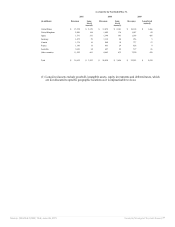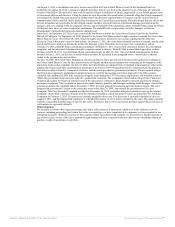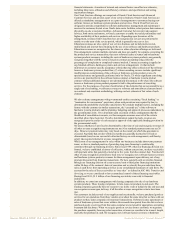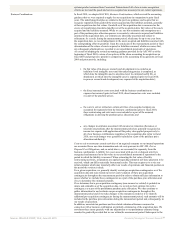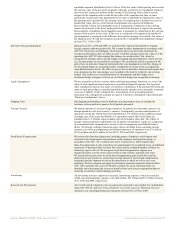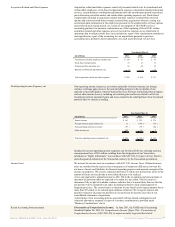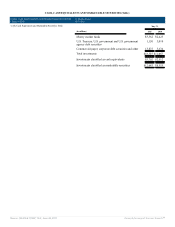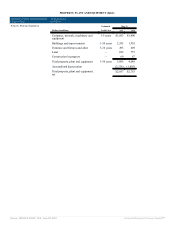Oracle 2010 Annual Report Download - page 214
Download and view the complete annual report
Please find page 214 of the 2010 Oracle annual report below. You can navigate through the pages in the report by either clicking on the pages listed below, or by using the keyword search tool below to find specific information within the annual report.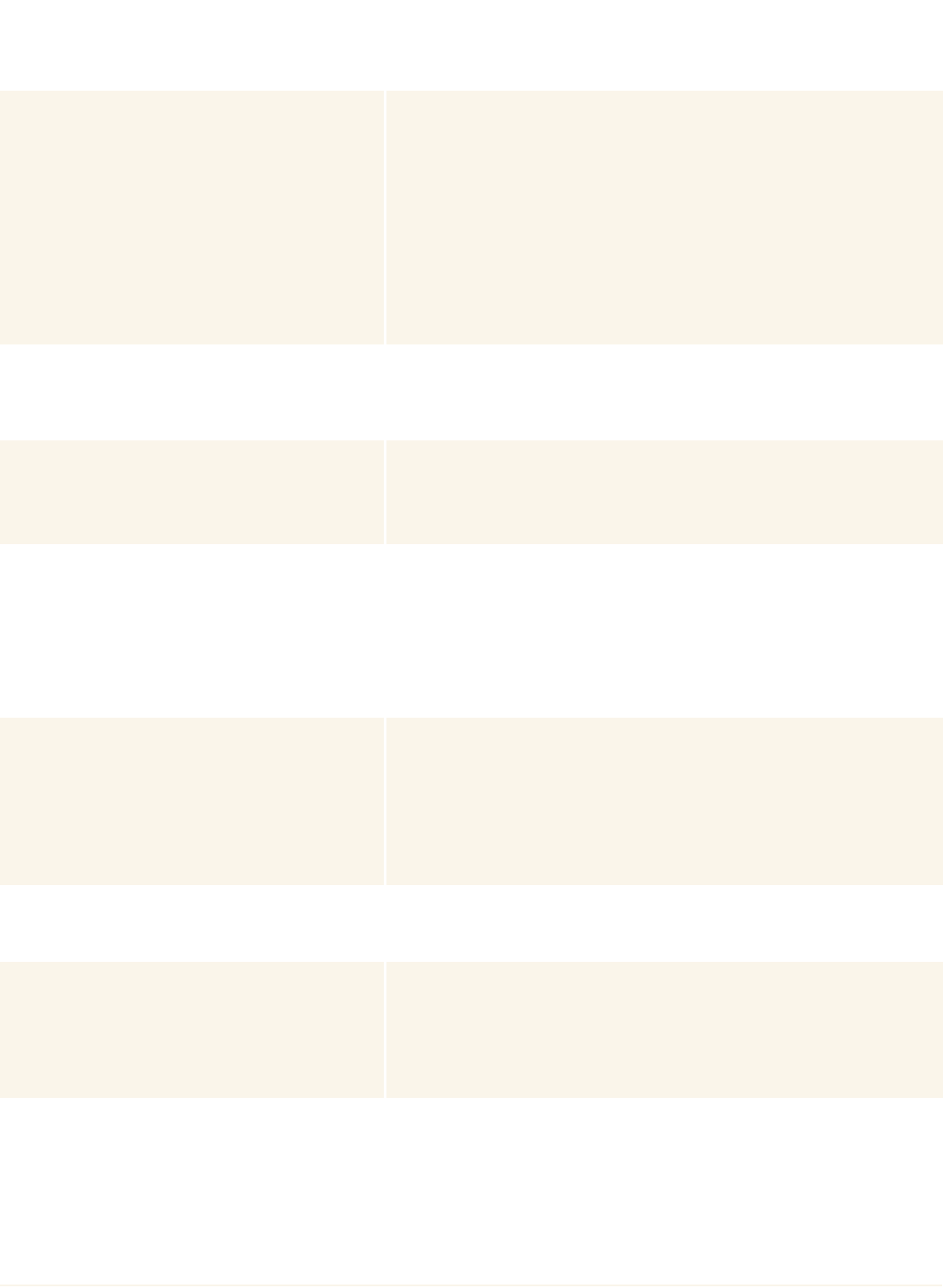
measurement period or our final determination of the tax allowance’s or contingency’s
estimated value, whichever comes first, changes to these uncertain tax positions and tax
related valuation allowances will affect our provision for income taxes in our consolidated
statement of operations and could have a material impact on our results of operations and
financial position.
Marketable and Non-Marketable Securities In accordance with ASC 320, Investments—Debt and Equity Securities, and based on our
intentions regarding these instruments, we classify substantially all of our marketable debt
and equity securities as available-for-sale. Marketable debt and equity securities are reported
at fair value, with all unrealized gains (losses) reflected net of tax in stockholders’ equity. If
we determine that an investment has an other than temporary decline in fair value, we
recognize the investment loss in non-operating income (expense), net in the accompanying
consolidated statements of operations. We periodically evaluate our investments to determine
if impairment charges are required.
We hold investments in certain non-marketable equity securities in which we do not have a
controlling interest or significant influence. These equity securities are recorded at cost and
included in other assets in the accompanying consolidated balance sheets. If based on the
terms of our ownership of these non-marketable securities we determine that we exercise
significant influence on the entity to which these non-marketable securities relate, we apply
the requirements of ASC 323, Investments—Equity Method and Joint Ventures to account for
such investments. Our non-marketable securities are subject to periodic impairment reviews.
Fair Value of Financial Instruments We apply the provisions of ASC 820, Fair Value Measurements and Disclosures, to our
financial instruments that we are required to carry at fair value pursuant to other accounting
standards, including our investments in marketable debt and equity securities and our
derivative financial instruments.
The additional disclosures regarding our fair value measurements are included in Note 4.
Allowance for Doubtful Accounts We record allowances for doubtful accounts based upon a specific review of all significant
outstanding invoices. For those invoices not specifically reviewed, provisions are provided at
differing rates, based upon the age of the receivable, the collection history associated with the
geographic region that the receivable was recorded in and current economic trends. We
write-off a receivable and charge it against its recorded allowance when we have exhausted
our collection efforts without success.
Concentration of Credit Risk Financial instruments that are potentially subject to concentrations of credit risk consist
primarily of cash and cash equivalents, marketable securities and trade receivables. Our cash
and cash equivalents are generally held with a number of large, diverse financial institutions
worldwide to reduce the amount of exposure to any single financial institution. Investment
policies have been implemented that limit purchases of marketable debt securities to
investment grade securities. We generally do not require collateral to secure accounts
receivable. The risk with respect to trade receivables is mitigated by credit evaluations we
perform on our customers, the short duration of our payment terms for the significant majority
of our customer contracts and by the diversification of our customer base. No single customer
accounted for 10% or more of our total revenues in fiscal 2011, 2010 or 2009.
Inventories Inventories are stated at the lower of cost or market value. Cost is computed using standard
cost, which approximates actual cost, on a first-in, first-out basis. We evaluate our ending
inventories for estimated excess quantities and obsolescence. This evaluation includes
analysis of sales levels by product and projections of future demand within specific time
horizons (generally six months or less). Inventories in excess of future demand are written
down and charged to hardware systems products expenses. In addition, we assess the impact
of changing technology to our inventories and we write down inventories that are considered
obsolete. At the point of the loss recognition, a new, lower-cost basis for that inventory is
established, and subsequent changes in facts and circumstances do not result in the restoration
or increase in that newly established cost basis.
Other Receivables Other receivables represent value-added tax and sales tax receivables associated with the sale
of our products and services to third parties. Other receivables are included in prepaid
expenses and other current assets in our consolidated balance sheets and totaled $876 million
and $733 million at May 31, 2011 and 2010, respectively.
Property, Plant and Equipment Property, plant and equipment is stated at the lower of cost or realizable value, net of
accumulated depreciation. Depreciation is computed using the straight-line method based on
estimated useful lives of the assets, which range from one to fifty years. Leasehold
improvements are amortized over the lesser of estimated useful lives or lease terms, as
appropriate. Property, plant and equipment is periodically reviewed for impairment whenever
events or changes in circumstances indicate that the carrying amount of an asset may not be
recoverable. We did not recognize any significant property impairment charges in fiscal 2011,
2010 or 2009.
Goodwill, Intangible Assets and Impairment Assessments Goodwill represents the excess of the purchase price in a business combination over the fair
value of net tangible and intangible assets acquired. Intangible assets that are not considered
to have an indefinite useful life are amortized over their useful lives, which generally range
from one to ten years. Each period we evaluate the estimated remaining useful life of
purchased intangible assets and whether events or changes in circumstances warrant a
revision to the remaining period of amortization.
The carrying amounts of these assets are periodically reviewed for impairment (at least
annually for goodwill and indefinite lived intangible assets) and whenever events or changes
in circumstances indicate that the carrying value of these assets may not be recoverable. The
goodwill impairment analysis is comprised of two steps. In the first step, we compare the fair
value of each reporting unit to its carrying value. Our reporting units are consistent with the
Source: ORACLE CORP, 10-K, June 28, 2011 Powered by Morningstar® Document Research℠


